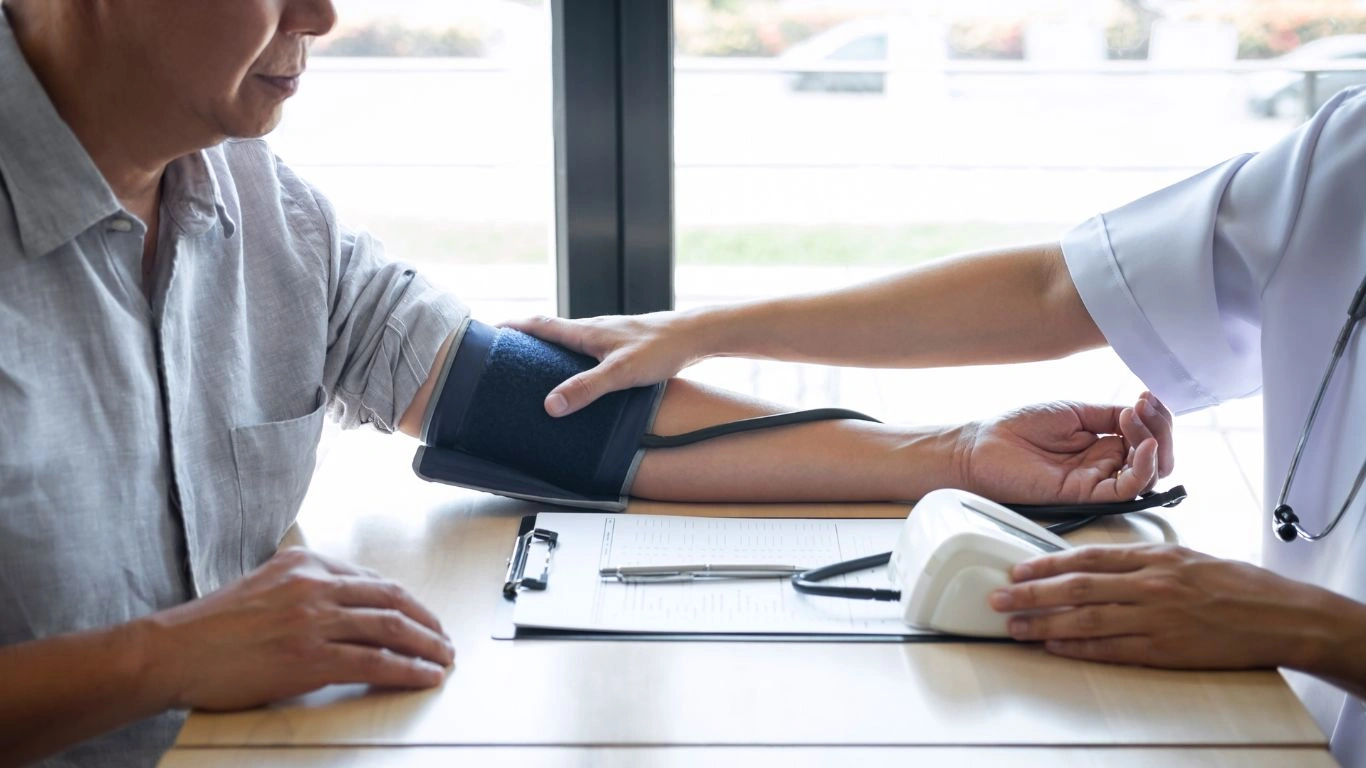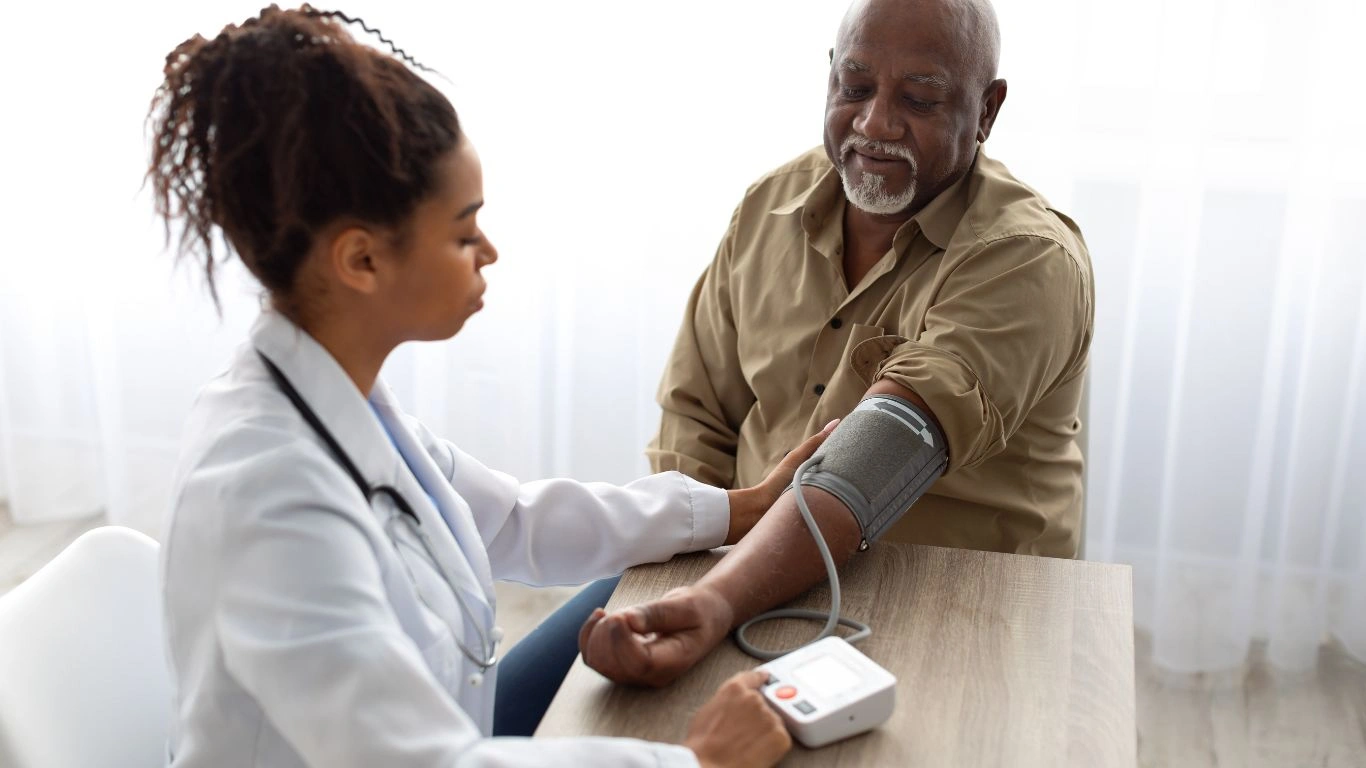How to Track Your Blood Pressure at Home: Simple Steps to Stay Healthy
High blood pressure, or hypertension, is a silent killer, and it’s one of those conditions that can sneak up on you without showing any clear symptoms. As a Hypertension Expert, I’ve seen firsthand how vital it is to monitor your blood pressure regularly. If you’re wondering how to track your blood pressure at home, you’ve come to the right place. Taking control of your health is key to managing hypertension, and one of the best ways to do so is by keeping track of your blood pressure from the comfort of your home.
Why Tracking Your Blood Pressure at Home Matters

Tracking your blood pressure at home isn’t just about having a number to report to your doctor; it’s a way for you to stay proactive about your health. Blood pressure can fluctuate throughout the day due to various factors like stress, diet, and physical activity. By measuring it regularly at home, you get a more accurate picture of how your body is responding to these daily variables. This is something I always emphasize to my patients – knowing your numbers is empowering.
Regular tracking can help you detect potential issues early. If your blood pressure readings start creeping up, you and your healthcare provider can work together to make changes to your treatment plan, lifestyle, or medication. Plus, it gives you a sense of control over your health, which can reduce anxiety and make the process feel less overwhelming.
What You’ll Need for Home Blood Pressure Monitoring
Before we dive into the actual process of taking your blood pressure at home, let’s talk about what you’ll need. The good news is, it’s simple and doesn’t require a lot of fancy equipment.
- Blood Pressure Monitor: You’ll need an automatic blood pressure monitor. These are easy to use and provide accurate readings. I always recommend getting one that has been validated for accuracy.
- Cuff Size: Make sure the cuff fits properly. If the cuff is too small or too large, it can throw off your readings. Many monitors come with adjustable cuffs, but it’s always worth double-checking.
- Quiet Space: Choose a calm, quiet spot to take your readings. This helps eliminate distractions that can affect your results.
Step-by-Step Guide to Taking Your Blood Pressure at Home

Now that you have the necessary equipment, it’s time to learn how to track your blood pressure at home effectively. Here’s my simple, step-by-step guide:
- Prepare Your Body: Sit down and relax for at least five minutes before taking your reading. It’s best to avoid caffeine, smoking, or exercise at least 30 minutes before measuring your blood pressure.
- Position Your Arm: Rest your arm on a flat surface at heart level. Your elbow should be relaxed, not tensed, and your palm should be facing upward.
- Wrap the Cuff: Place the cuff around your upper arm, making sure it’s snug but not too tight. It should be about an inch above the bend of your elbow. If you’re using a wrist monitor, make sure your wrist is level with your heart.
- Start the Monitor: Press the button to start the monitor. The cuff will inflate, and within a minute or so, your blood pressure reading will appear on the screen.
- Record Your Results: Write down your readings – systolic (the top number) and diastolic (the bottom number). It’s important to track these over time so you can notice trends.
What to Do with Your Blood Pressure Readings
Once you have your readings, it’s time to interpret them. If you’re unsure what the numbers mean, here’s a quick reference:
- Normal: Less than 120/80 mmHg
- Elevated: 120-129/less than 80 mmHg
- Hypertension Stage 1: 130-139/80-89 mmHg
- Hypertension Stage 2: 140+/90+ mmHg
- Hypertensive Crisis: Higher than 180/120 mmHg – seek immediate medical attention.

If your readings are consistently high, it’s important to reach out to your healthcare provider. They might adjust your treatment or recommend lifestyle changes. But even if your numbers are within a normal range, don’t ignore them! Regular monitoring can help you stay on track and prevent any surprises down the road.
Case Studies & Real-Life Examples

One of the best ways to understand the importance of tracking your blood pressure at home is through real-life examples. Over the years, I’ve had the privilege of working with many patients who’ve shared their experiences of managing their hypertension through regular monitoring.
For example, I remember working with a patient named John. He was in his late 50s and had been struggling with high blood pressure for years. His doctor had prescribed medication, but John still felt uncertain about his progress. After learning how to track his blood pressure at home, he became much more confident in managing his health. He started to notice patterns – for instance, his blood pressure was consistently higher on days when he didn’t get enough sleep or consumed too much sodium. This realization led him to make small but impactful changes in his lifestyle, like reducing his salt intake and improving his sleep routine.
Another example is Sarah, a woman in her 40s who had just been diagnosed with hypertension. She was worried and overwhelmed. But once she understood how to track her blood pressure at home, she was able to work alongside her healthcare team to develop a treatment plan that suited her lifestyle. Her efforts to monitor her blood pressure not only gave her peace of mind but also helped her stay motivated in making the necessary adjustments to her diet and exercise regimen.
These are just two examples, but they highlight a common theme: tracking your blood pressure at home empowers you. It provides valuable data that you can share with your doctor, and it helps you feel more in control of your health journey.
Key Takeaways: What You Need to Remember
As we wrap up this article, here are the key takeaways you should remember when it comes to tracking your blood pressure at home:
- Accuracy matters: Always use a validated blood pressure monitor and ensure the cuff is the right size for you.
- Consistency is key: Regular monitoring will give you the most accurate picture of your blood pressure trends.
- Track your readings: Keep a log of your blood pressure readings, as this will help your healthcare provider make informed decisions.
- Follow up with your healthcare provider: If your readings are consistently high, don’t hesitate to reach out for professional guidance.
- Make lifestyle changes: In addition to medication, lifestyle adjustments like reducing sodium intake, increasing physical activity, and managing stress are crucial in controlling high blood pressure.
FAQs
Here are some frequently asked questions I often get from my patients about tracking blood pressure at home:
- How often should I check my blood pressure at home? Generally, it’s recommended to take your blood pressure at least once a day, preferably at the same time each day. However, if you’re monitoring a specific change or condition, your doctor may suggest more frequent checks.
- Can I take my blood pressure readings right after exercising? It’s best to wait at least 30 minutes after physical activity before measuring your blood pressure. Exercise can temporarily elevate your numbers, so waiting ensures more accurate readings.
- What if my readings are different every time I measure? It’s not uncommon to have slight variations in readings. Factors like body position, cuff size, or stress can impact your results. Consistency is more important, so track trends over time rather than focusing on one reading.
Bonus: Additional Resources or DIY Tips
If you want to dive deeper into managing your blood pressure, here are some extra resources and tips:
- Mindfulness & Stress Reduction: Techniques like deep breathing, meditation, and yoga can be helpful in lowering blood pressure. I’ve seen firsthand how patients who incorporate these practices into their routine experience lower stress and better blood pressure control.
- Nutrition Tips: Try to eat more potassium-rich foods, such as bananas, spinach, and sweet potatoes. Reducing processed foods and limiting your intake of sodium can make a significant difference.
- Fitness Tracker Apps: Many apps allow you to track not only your blood pressure but also your physical activity and diet. These can be incredibly useful in maintaining your health goals.
Appendix: Table, References, Disclaimer, and Call to Action
References: For more detailed information on blood pressure monitoring and hypertension, visit trusted resources like the American Heart Association (AHA) and Mayo Clinic.
Disclaimer: This article is intended for informational purposes only and is not a substitute for professional medical advice, diagnosis, or treatment. Always consult your healthcare provider for personalized recommendations and care.
If you’ve learned something valuable today about how to track your blood pressure at home, don’t forget to share this article with friends and family who may benefit from it! And as always, remember: taking small, consistent steps toward better health can lead to big improvements.
#LNF

Dr. Gwenna Aazee is a board-certified Internal Medicine Physician with a special focus on hypertension management, chronic disease prevention, and patient education. With years of experience in both clinical practice and medical writing, she’s passionate about turning evidence-based medicine into accessible, actionable advice. Through her work at Healthusias.com, Dr. Aazee empowers readers to take charge of their health with confidence and clarity. Off the clock, she enjoys deep dives into nutrition research, long walks with her rescue pup, and simplifying medical jargon one article at a time.






